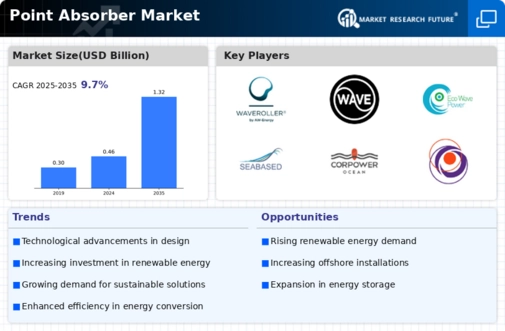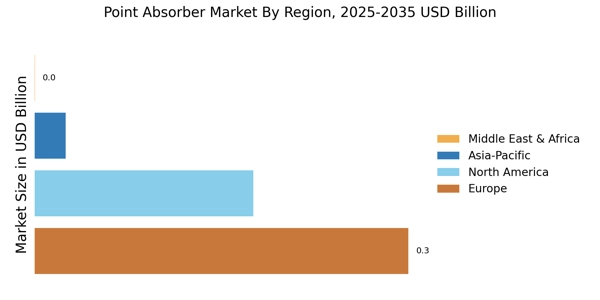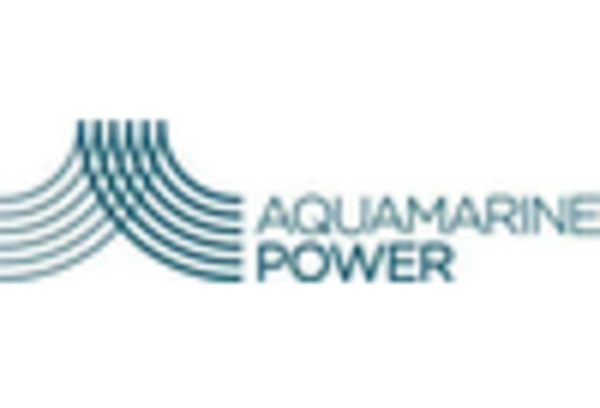Technological Innovations
Technological advancements play a crucial role in shaping the Point Absorber Market. Innovations in materials, design, and energy conversion processes are enhancing the efficiency and reliability of point absorbers. For instance, the development of advanced materials that can withstand harsh marine environments is likely to improve the longevity and performance of these devices. Furthermore, recent studies indicate that the efficiency of energy conversion in point absorbers has improved by approximately 15% over the past few years. Such advancements not only make point absorbers more competitive against other renewable energy sources but also attract investments and interest from stakeholders in the energy sector.
Government Incentives and Policies
Government support through incentives and favorable policies is a significant driver for the Point Absorber Market. Many countries are implementing policies that encourage the adoption of renewable energy technologies, including wave energy. For example, feed-in tariffs and tax credits for renewable energy projects are becoming increasingly common. These incentives can lower the financial barriers for developers and investors, thereby stimulating growth in the point absorber sector. Recent reports suggest that countries with robust policy frameworks for renewable energy have seen a 20% increase in project installations related to wave energy, highlighting the importance of regulatory support in driving market growth.
Rising Demand for Renewable Energy
The increasing The Point Absorber Industry. As nations strive to meet their energy needs sustainably, the demand for wave energy converters, such as point absorbers, is expected to rise. According to recent data, the renewable energy sector is projected to grow at a compound annual growth rate (CAGR) of over 8% through the next decade. This growth is likely to be fueled by government initiatives and investments aimed at reducing carbon emissions and promoting clean energy technologies. Consequently, the Point Absorber Market stands to benefit significantly from this trend, as more countries integrate wave energy into their energy portfolios.
Growing Awareness of Climate Change
The escalating awareness of climate change and its impacts is propelling the Point Absorber Market forward. As public consciousness regarding environmental issues rises, there is a growing demand for clean energy solutions that can mitigate climate change effects. Point absorbers, which harness energy from ocean waves, present a viable alternative to fossil fuels. Recent surveys indicate that over 70% of consumers are willing to support renewable energy initiatives, which could lead to increased investments in wave energy technologies. This shift in consumer behavior is likely to encourage more companies to explore opportunities within the Point Absorber Market, further driving its expansion.
Investment in Marine Energy Infrastructure
Investment in marine energy infrastructure is emerging as a vital driver for the Point Absorber Market. As countries recognize the potential of ocean energy, there is a concerted effort to develop the necessary infrastructure to support point absorber technologies. This includes the construction of testing facilities, grid connections, and maintenance services tailored for marine energy systems. Recent data indicates that investments in marine energy infrastructure have increased by approximately 25% over the last few years, reflecting a growing commitment to harnessing ocean resources. Such investments are likely to enhance the viability and scalability of point absorbers, thereby fostering growth within the market.


















Leave a Comment